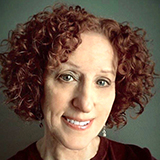Ensuring the Safety and Performance of Electrical Products
09 Feb 2021
The Testing and Certification Process in North America
Some manufacturers may consider testing and certification an obstacle to overcome to get to market. Others might see it as an important way to reduce risk or liability. But testing and certification provides peace of mind to many groups like inspectors, distributors, retailers, and consumers, making it a critical step in the development of electrical products.
The process starts with standards, which outline requirements and guidelines for product safety and performance. Some become industry regulations while others remain voluntary. In the United States, testing and certification for products used in the workplace is done by accredited independent third-party testing organizations called Nationally Recognized Testing Laboratories (NRTLs). These labs are accredited by the Occupational Safety and Health Administration (OSHA). In Canada, accreditation of independent third-party testing labs and certification bodies (CBs) is granted via the Standards Council of Canada (SCC). Many Canadian CBs are also NRTLs in the U.S.
Testing
To begin testing, the lab identifies applicable standard(s) based on the product, its intended use, and the environment in which it will operate. The lab then prepares a test plan, which it uses to perform the safety and performance assessments on samples provided by the manufacturers. These samples are representative of normal manufacture, using the materials, composition, and processes that will be used when manufacturing the product in the future. It is understood that the product will continue to be manufactured in the same manner, thus meeting – or failing – the requirements, just as the samples did.
The lab assesses the samples for overall safety, function, performance, and/or adherence to codes such as the National Electric Code, and produces a test report outlining testing methods, data, and findings. This report illustrates compliance or non-compliance to standards. In cases where certification is not required as a next step, the testing report is the final deliverable, and products can be placed on the market. For products requiring certification however, the test report is sent on for the next steps in that process.
Certification
Certification illustrates a product's compliance with a safety standard(s) generally necessary for market entry. Certified products bear a certification mark from an accredited CB. These marks demonstrate that product samples have been appropriately evaluated and found to meet applicable certification requirements.
After testing, the test report, along with additional quality documents, are sent for technical review, with a certification review to follow. A mark/label review occurs after satisfactory technical and certification reviews. When all three levels of analysis are finished, most CBs will issue certification and list the product in a relevant directory. Follow-up inspections and certification maintenance will continue throughout the product's certification lifecycle.
Manufacturers apply to mark to the product, packaging and/or product manuals, per marking guidance from the CB. A listing mark indicates a product complied with applicable standards when it left the manufacturing location. Changes, alterations, or reconditioning will invalidate the certification and such equipment should be evaluated and certified by a third-party.
Ensuring the overall safety and performance of electrical products is essential. It helps to keep people and property safe. It can help ensure success in the marketplace and enhance brands and reputations. It fulfills legal and/or regulatory requirements. In the end, it benefits everyone involved in developing and using electrical products.

Joan Sterling,
Vice President, Public and Government Affairs
Joan Sterling is the Vice President of Government Affairs for Intertek, where her responsibilities include representing the Company to federal agencies, manufacturers' trade associations, and members of US congress. She currently represents Intertek on several standards and policy committees. With more than 30 years at Intertek, she has also managed electrical, photometric and telecommunications testing operations, with previous experience in engineering, sales, and marketing.